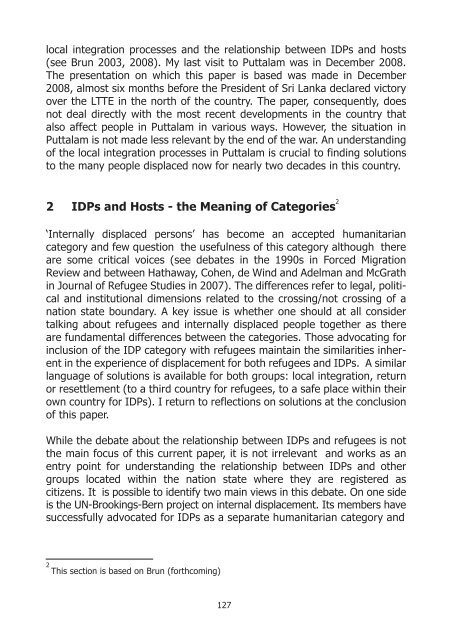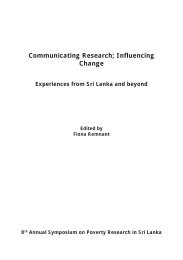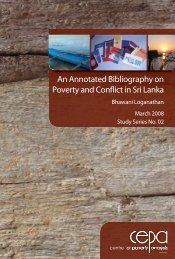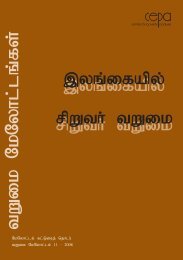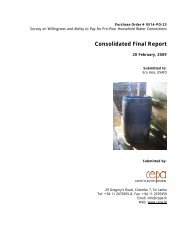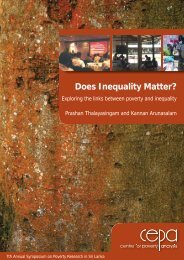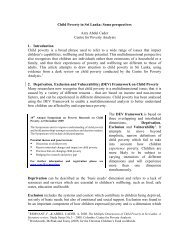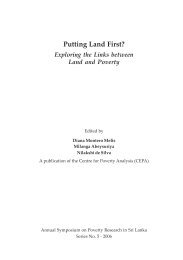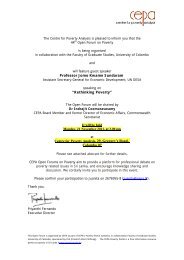Involuntary Displacement and Resettlement â Policy and ... - CEPA
Involuntary Displacement and Resettlement â Policy and ... - CEPA
Involuntary Displacement and Resettlement â Policy and ... - CEPA
- No tags were found...
Create successful ePaper yourself
Turn your PDF publications into a flip-book with our unique Google optimized e-Paper software.
local integration processes <strong>and</strong> the relationship between IDPs <strong>and</strong> hosts(see Brun 2003, 2008). My last visit to Puttalam was in December 2008.The presentation on which this paper is based was made in December2008, almost six months before the President of Sri Lanka declared victoryover the LTTE in the north of the country. The paper, consequently, doesnot deal directly with the most recent developments in the country thatalso affect people in Puttalam in various ways. However, the situation inPuttalam is not made less relevant by the end of the war. An underst<strong>and</strong>ingof the local integration processes in Puttalam is crucial to finding solutionsto the many people displaced now for nearly two decades in this country.2 IDPs <strong>and</strong> Hosts - the Meaning of Categories 2‘Internally displaced persons’ has become an accepted humanitariancategory <strong>and</strong> few question the usefulness of this category although thereare some critical voices (see debates in the 1990s in Forced MigrationReview <strong>and</strong> between Hathaway, Cohen, de Wind <strong>and</strong> Adelman <strong>and</strong> McGrathin Journal of Refugee Studies in 2007). The differences refer to legal, political<strong>and</strong> institutional dimensions related to the crossing/not crossing of anation state boundary. A key issue is whether one should at all considertalking about refugees <strong>and</strong> internally displaced people together as thereare fundamental differences between the categories. Those advocating forinclusion of the IDP category with refugees maintain the similarities inherentin the experience of displacement for both refugees <strong>and</strong> IDPs. A similarlanguage of solutions is available for both groups: local integration, returnor resettlement (to a third country for refugees, to a safe place within theirown country for IDPs). I return to reflections on solutions at the conclusionof this paper.While the debate about the relationship between IDPs <strong>and</strong> refugees is notthe main focus of this current paper, it is not irrelevant <strong>and</strong> works as anentry point for underst<strong>and</strong>ing the relationship between IDPs <strong>and</strong> othergroups located within the nation state where they are registered ascitizens. It is possible to identify two main views in this debate. On one sideis the UN-Brookings-Bern project on internal displacement. Its members havesuccessfully advocated for IDPs as a separate humanitarian category <strong>and</strong>2This section is based on Brun (forthcoming)127


